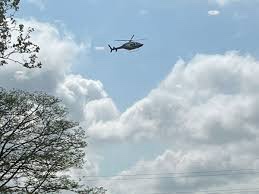SERA regulations pitfall

Panic averted (for the UK at least)! A new regulation was due to come into force in April 2017 by SERA (Standardised European Rules of the Air) which would have been very bad for any landing site in Europe that sits in controlled airspace (i.e. class D in the Uk).

If you are operating into an HLS (Helicopter Landing Site) within controlled airspace, ATC (Air traffic control) would not be able to give you a clearance to take off from that site either VFR (Visual flight rules) or SVFR (Special Visual flight rules). This was the NATS-part 1 interpretation of the new regulations and local ATCs will be following that policy.
Some quick-thinking by the UK’s CAA saved the day for UK piliots. They issued a “Supplementary Instruction 2017/02v5 to the CAP 493 MATS (Manual of Air Traffic Services) where they deem all PPL pilots as “accredited weather observers”. In full :
For the purpose of observing the meteorological conditions at an uncontrolled and/or unlicenced aerodrome or operating site located within a control zone, and assessing whether those conditions satisfy the minima specified in SERA.5005(b) and SERA.5010(c) as appropriate, the Civil Aviation Authority deems the following to be competent to act as ‘accredited observers’ as required within Regulation (EU) 923/2012 Article 2(82) for their flight:
(a) The holders of valid EASA Flight Crew Licences, valid National Flight Crew Licences and Certificates issued by, or on behalf of, the United Kingdom Civil Aviation Authority, and third country licences deemed valid in accordance with Article 150 of the Air Navigation Order 2016; and
(b) A student pilot-in-command (SPIC) who has passed the theoretical knowledge examination in meteorology toward the grant of a EASA Flight Crew Licence or National Flight Crew Licence or Certificate issued by, or on behalf of, the United Kingdom Civil Aviation Authority within the preceding two years.
We have not been able to ascertain the situation for the other member states, in particular France and Italy, where we have plenty of HLS’s situated within controlled airspace.


